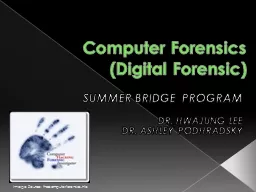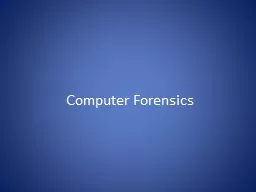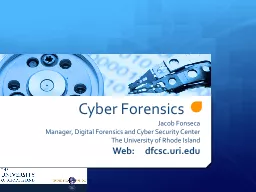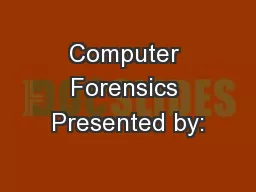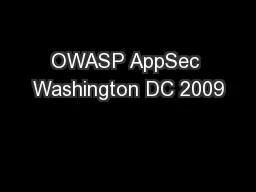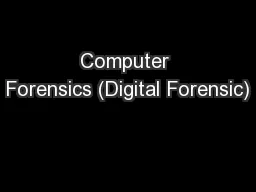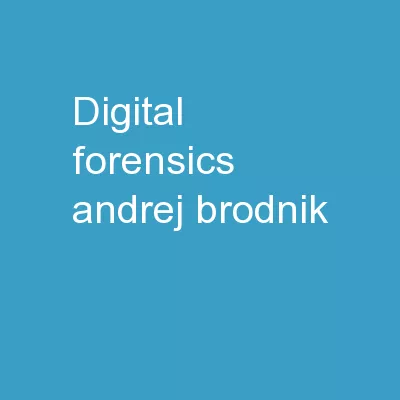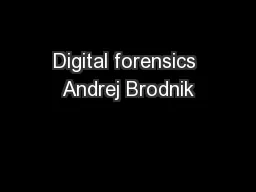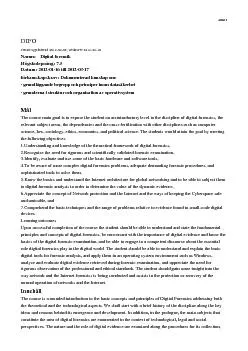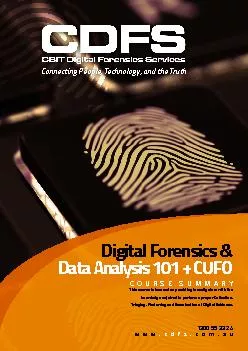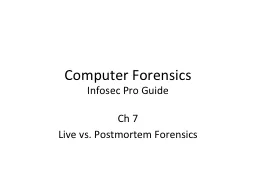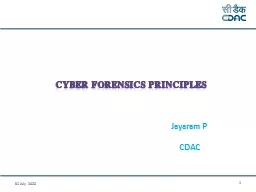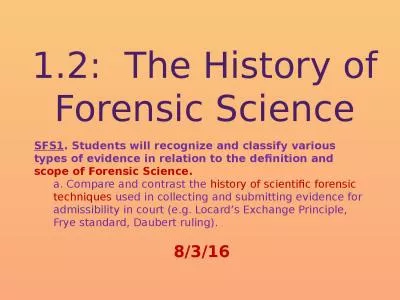PPT-Computer Forensics (Digital Forensic)
Author : pamella-moone | Published Date : 2019-11-28
Computer Forensics Digital Forensic SUMMER BRIDGE PROGRAM DR HWAJUNG LEE DR ASHLEY PODHRADSKY Dr Prem Uppuluri Image Source thecomputerforensicsinfo DAY ONE Who
Presentation Embed Code
Download Presentation
Download Presentation The PPT/PDF document "Computer Forensics (Digital Forensic)" is the property of its rightful owner. Permission is granted to download and print the materials on this website for personal, non-commercial use only, and to display it on your personal computer provided you do not modify the materials and that you retain all copyright notices contained in the materials. By downloading content from our website, you accept the terms of this agreement.
Computer Forensics (Digital Forensic): Transcript
Download Rules Of Document
"Computer Forensics (Digital Forensic)"The content belongs to its owner. You may download and print it for personal use, without modification, and keep all copyright notices. By downloading, you agree to these terms.
Related Documents

